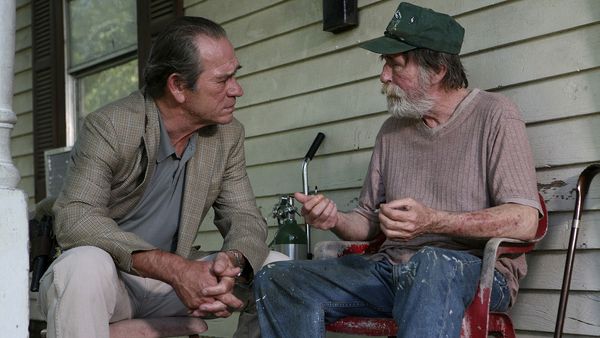Eye For Film >> Movies >> In The Electric Mist (2009) Film Review
In The Electric Mist
Reviewed by: Adam Micklethwaite

Adapted from a James Lee Burke novel, In The Electric Mist is a gripping tale of murder, suspicion, violence and guilt, as the ghosts of the past come back to haunt the protagonists of the present out in Lousiana’s New Iberia Bayou. French director, and noted American crime aficionado, Bertrand Tavernier has wisely chosen to update the action of the Burke’s novel (set in the early Nineties) to a post-Katrina Louisiana, which adds a sociopolitical resonance and contemporary relevance to the film’s events, especially in the light of its focus upon the mob, who looted millions of dollars of reconstruction money in the wake of the hurricane’s devastation. If you’re looking for a slick, neatly Hollywood crime thriller then this is not for you, but if you want a film with more ambiguity, which poses questions as well as offering answers, then I heartily recommend it.
This thriller-cum-noir-murder mystery opens with the discovery of the brutal, sadistic murder of a young prostitute, who had connections with mobster-turned-film-producer Julie "Baby Feet" Balboni (John Goodman, having an absolute riot), one-time school friend and now bitter enemy of investigating detective Dave Robicheaux (Tommy Lee Jones). The murder investigation is further complicated by the discovery of a second, much older corpse, by alcoholic film star Peter Sarsgaard.

Robicheaux becomes convinced the murders are connected and that a much older incident from the Bayou’s dark and distant past holds the key to the murder of the young woman. This theory is compounded by his hallucinatory, dreamlike encounters with a long-dead Confederate general, with whom he shares an ethereal bond, haunted as they both are by the past, each driven by a world-weary conscience and desire to conquer their demons.
The fusion of the crime thriller’s grim reality with the otherworldly fantasy of the ghostly confederate army is, for the most part, very effective, impressively supported by Bruno de Keyser’s excellent and atmospheric cinematography, which transforms the Bayou itself into one film’s central characters, making the appearance of the ghostly general all the more appropriate to the setting.
Lee Jones is every inch the Vietnam veteran-cum-hard boiled police detective, a guilt-wracked Catholic with a complicated interpretation of the law, who is certainly not a stereotypical lawman. Some will worry that his sherriff/detective/lawman persona is wearing a little thin but what I personally find impressive is the subtle variety Jones has been able to bring to a number of roles which bear such a surface resemblance. Uttering lines such as: "Time is always on the bad guys’ side," is certainly playing with fire, evoking as it does the cliché of the vigilante lawman, but Jones brings a rare credibility to the persona, which allows him to sidestep the danger of self-parody.
There is a seminal moment in the film when Dave Robicheaux is talking to his wife about the nature of understanding. He says that "If you don’t look, you never will see and if you look a little less you might see a whole lot more." This message may appear somewhat cryptic, but it could also hold the key to understanding the film itself, just as it does to Dave’s search for the link between the two murders and for the connection between the mob and the killer. We need to step back a little from the narrative thread to appreciate the carefully crafted ambiance and deliberate open-endedness of the film, as Tavernier moves from the beaten path of the convenient certainties and definitive endings of the Hollywood thriller towards something more ambiguous and unsettling.
This is a crime thriller where some of the answers will remain forever a mystery, where the quest for understanding is both complicated and aided by spectres of the past and where some things are deliberately kept beyond the realm of understanding.
Reviewed on: 01 Mar 2009
















